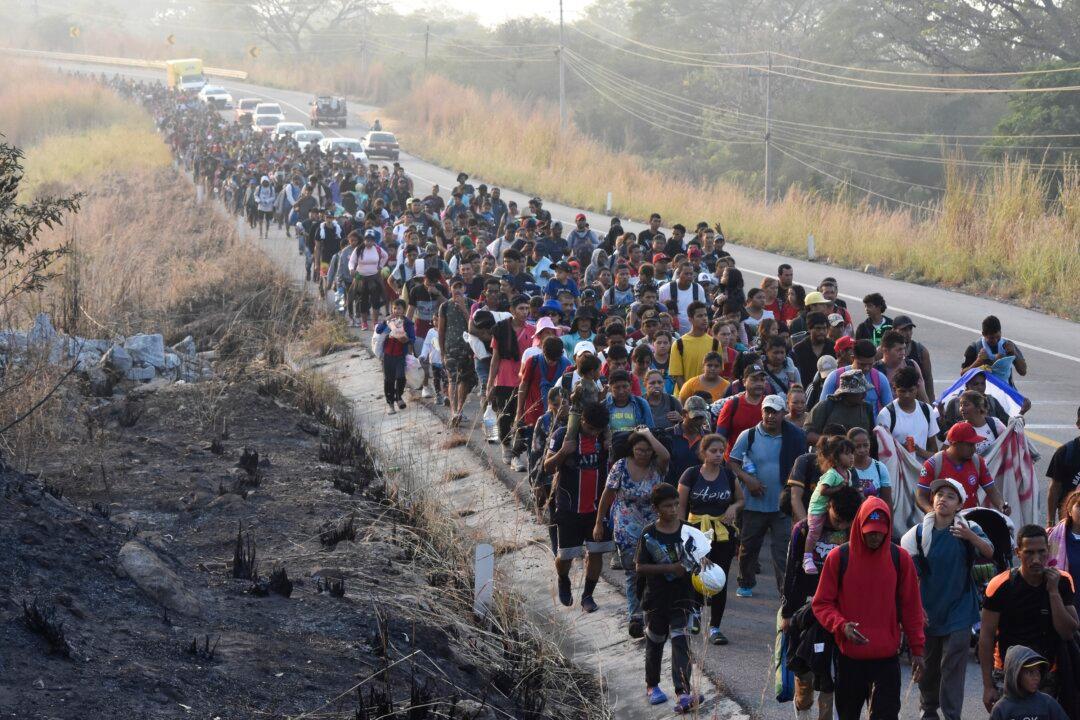“Until the department addresses these challenges, DHS will remain at risk of admitting dangerous persons into the country or enabling asylum-seekers who may pose significant threats to public safety and national security to continue to reside in the United States,” the report states.
The report comes as illegal immigrants have been charged in several high-profile murders, with the most recent involving a 12-year-old girl in Houston.
U.S. Immigration and Customs Enforcement also recently apprehended eight Tajikistan nationals with ties to the terror group ISIS.
In response to the report, DHS agreed to incorporate five recommendations the IG made to shore up security.
“The vetting system does not provide all of the information that the government has,” Mr. Morell said.
It noted the rise in international terrorist activity, such as the brutal Oct. 7, 2023, attack by Hamas against Israeli civilians and the ISIS-K attack that killed 145 people and injured 550 at a concert hall in Moscow in March.
Terrorist Connections Detected
FBI Director Christopher Wray said during committee testimony in March that there were indications of a terrorist-connected smuggling network operating on the southwest border. The group had overseas facilitators with ISIS ties, he testified.Findings show that facial recognition technology helped CBP identify 1,767 impostors at ports of entry into the United States by air and land between 2018 and 2023.
However, that technology is only used in some port entry situations, leaving the door open for bad actors.

Also, asylum-seekers, who sometimes linger in the country for years before their cases are heard, aren’t rescreened by USCIS until cases are up for review. That means new information can be missed, leaving dangerous individuals residing in the homeland.
One example the report gave was a one-time 2020 screening of backlogged asylum cases. Officers identified derogatory information for 53,649 of the more than 330,000 asylum applicants to identify applicant criminal history information. Derogatory information is anything that could justify disqualifying an applicant.
Officers also discovered at least 620 asylum-seekers identified as national security concerns.
The report noted 413,000 delayed asylum cases that Citizenship and Immigration Services took up to five years to adjudicate.
It recommended frequently rescreening applicants to identify new or previously unknown derogatory information that may indicate a potential threat.
“Our analysis of affirmative asylum applications filed between October 2017 and March 2023 revealed that 20,221 applicants who received a favorable initial screening generated a hit in a subsequent security screening,” the report stated.
Ports of entry are vulnerable as well, the report stated.
At border crossings, CBP uses facial comparison biometric screening at air and sea entry ports and land pedestrian lanes. Officers capture a facial photo and scan the pedestrian’s travel document. The source photo is then retrieved from the cloud-based database for comparison to the traveler’s live photo.

Crossing by Vehicle
That same biometric facial comparison screening, however, isn’t used for people coming through land ports of entry in vehicles, creating a blind spot, according to the report.Officers frequently only query vehicle drivers, not passengers, to identify criminal warrants, national security concerns, or border crossing history.
To speed traffic flow, travelers were admitted into the country either without identification or with expired documents in some cases, the report stated.
Of the 20 CBP offices nationwide, only seven produced procedures or policies in place for traveler inspection adjustments during long vehicle waiting times, but none contained guidance related to querying only the drivers.
Passengers are sometimes looking down, lying down, or wearing sunglasses or hats, which hide or obstruct their faces and limit photography. Light glare, dirty windshields, and vehicle door frames also pose problems getting photos, the report said.
The report didn’t elaborate on why passengers couldn’t be asked to remove hats, glasses, or other impediments to photos.
CBP attributed the inability to fully implement biometric facial recognition technology at land ports of entry to a lack of funding.
The inspector general recommended correcting problems with data access between agencies, developing new name-checking policies, updating technology for gathering biometric data for vehicle travelers, and working to automate security checks for asylum applicants, while requiring continuous rescreening for those with extended adjudication wait times.







